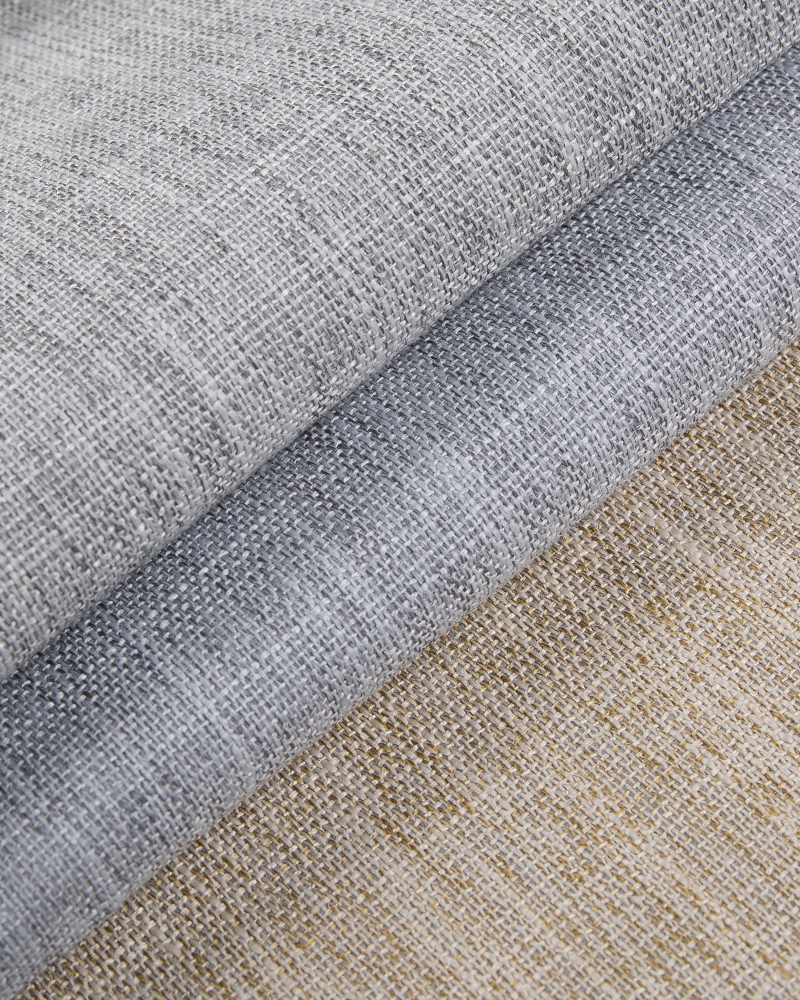
Cotton-linen curtains combine the best qualities of both cotton and linen fibers, offering a natural, rustic aesthetic along with functional properties. When it comes to heat resistance and aging resistance, cotton-linen fabrics exhibit a range of characteristics that impact their performance and longevity.
Cotton-linen fabrics are relatively resilient to heat, but the heat resistance can vary depending on the specific blend and the overall quality of the fabric.
Cotton is a natural fiber that is fairly tolerant to heat, but it is not as heat-resistant as synthetic fibers (e.g., polyester or nylon). When exposed to excessive heat, cotton can scorch or become brittle. However, cotton fabrics can generally withstand moderate temperatures, making them suitable for typical home environments.
Cotton-linen curtains will usually handle heat from sunlight or mild temperatures in living spaces without significant issues, though prolonged exposure to direct heat (such as radiators or stoves) can cause the fabric to degrade over time.
Linen, derived from the flax plant, is more heat-resistant than cotton. Linen fibers are known for their high thermal stability, which means they can withstand higher temperatures without significant damage. This makes linen curtains more suitable for environments where moderate heat exposure is common, such as areas near sunny windows or in rooms with varying temperatures.
However, linen fibers are more brittle when exposed to constant heat or excessive moisture, which can eventually weaken the material. Linen’s strength and heat tolerance are generally good, but still not as high as synthetic fibers like polyester.
Cotton-linen blend fabrics provide a balance between the two fibers, offering heat resistance that is generally more favorable than pure cotton but less than pure linen. While they are not as resistant to high temperatures as synthetic fibers, they are still well-suited for moderate indoor conditions.
Cotton-linen curtains should not be placed in direct contact with high heat sources like stoves, fireplaces, or heating vents, as prolonged exposure could lead to fiber degradation, especially for cotton portions.
The ability of cotton-linen curtains to withstand aging—the gradual wear and tear from environmental factors like light, temperature, moisture, and general use—depends on a variety of factors, including the fiber composition and the quality of fabric treatment.
Cotton, while soft and comfortable, tends to have lower aging resistance compared to synthetic fibers. Over time, cotton fibers can become weakened by UV exposure, leading to fading, yellowing, and loss of texture.

Cotton’s natural absorbency makes it more prone to mildew and mold in humid environments. Over time, this can cause fiber breakdown, leading to thinning and eventual damage. This is particularly a concern in kitchens or bathrooms, where high humidity levels exist.
Cotton fabrics may also suffer from shrinking with repeated washing and exposure to high temperatures, which can change their fit and appearance.
Linen is more durable than cotton and has better aging resistance. It has high tensile strength, which means it can withstand wear and tear better than cotton. Linen is also less prone to pilling, a common issue with cotton fabrics over time.
Linen’s natural resistance to mildew and antimicrobial properties make it more suitable for areas with fluctuating moisture levels. The fiber’s breathability also helps it stay fresh for longer periods.
Over time, linen can soften and develop a lived-in charm, often becoming more comfortable with age. However, prolonged exposure to sunlight and environmental factors can cause linen fibers to weaken, particularly if the fabric isn’t treated with UV-resistant coatings.
Like cotton, linen is also susceptible to shrinkage after washing, though this is less pronounced than with cotton.
The blend of cotton and linen in curtains combines the benefits of both fibers. The linen helps increase the strength and longevity of the fabric, while the cotton provides a softer touch. This combination results in a fabric that is more resistant to aging than 100% cotton but still retains some of the softness and comfort that cotton provides.
The increased strength from linen helps the fabric resist wear and tear over time, and it also improves the fade resistance compared to pure cotton. However, the cotton content may still cause some fading or wear with prolonged exposure to sunlight.
The cotton-linen blend generally ages well, developing a soft, natural patina over time. It can become more appealing as it gains character, provided it's cared for properly (e.g., avoiding excessive sun exposure and protecting it from high humidity).
In summary, cotton-linen curtains offer a balance between comfort, durability, and natural aesthetics. In terms of heat resistance, they can handle moderate temperatures but should be kept away from direct heat sources to prevent damage. Linen offers better heat resistance than cotton, and the blend of both fibers provides a fabric that is more durable and heat-resistant than pure cotton alone.